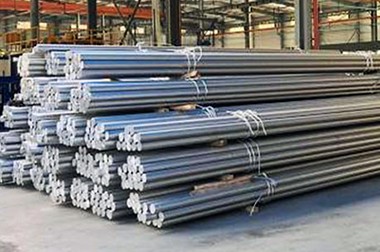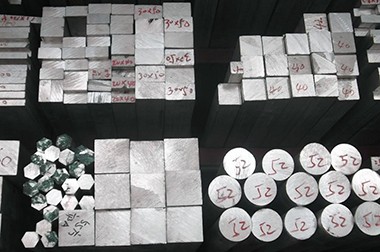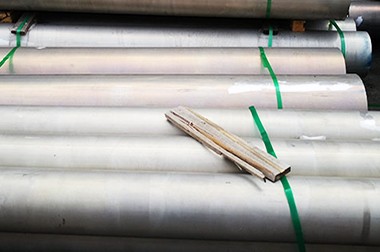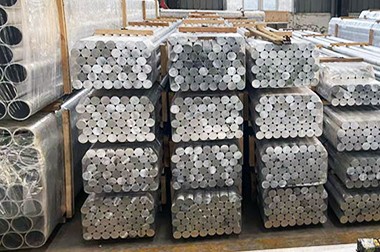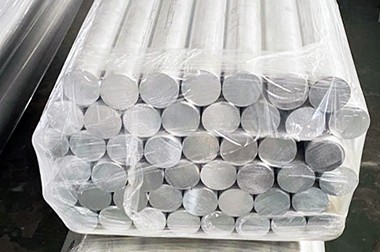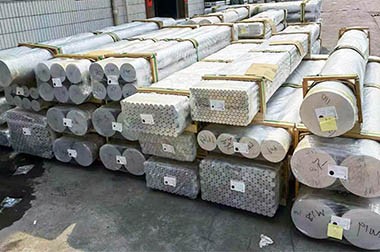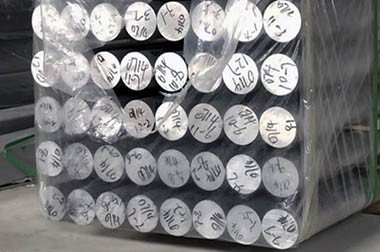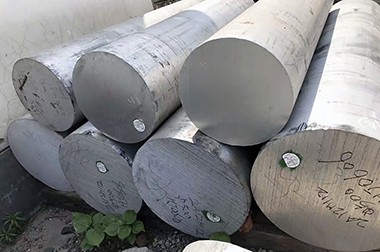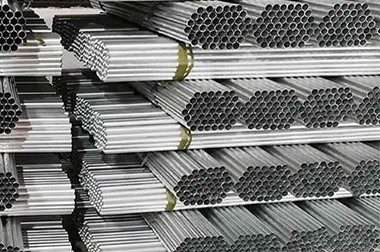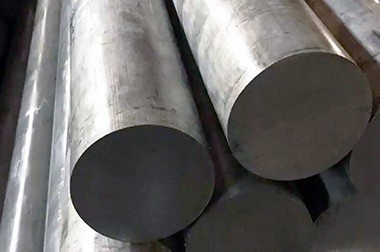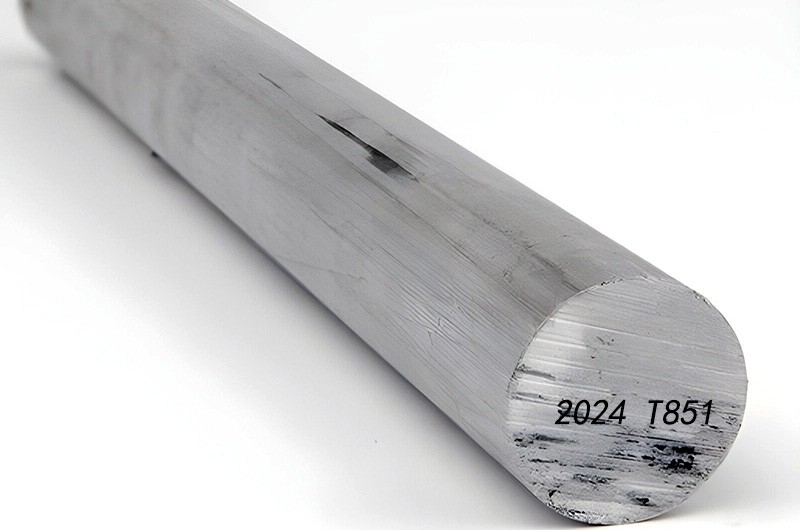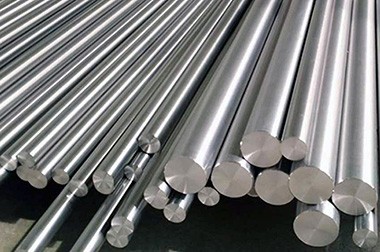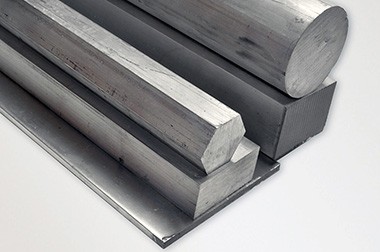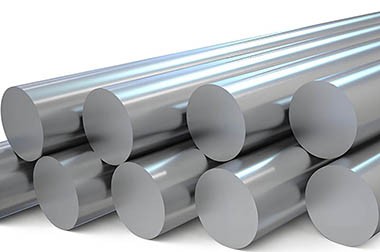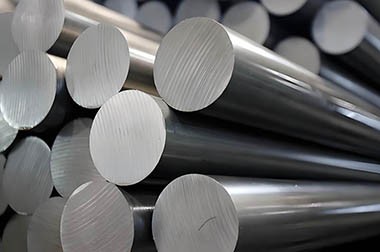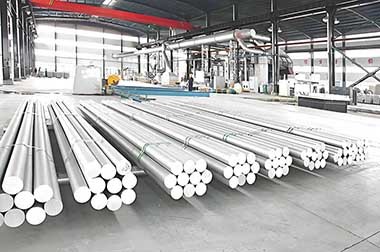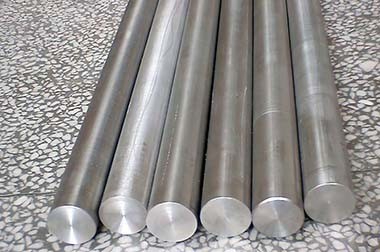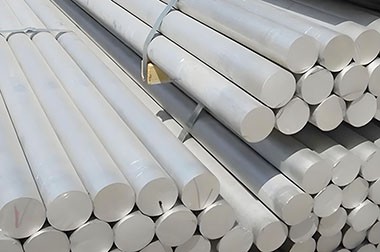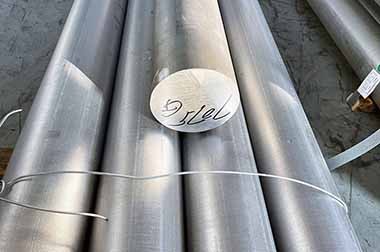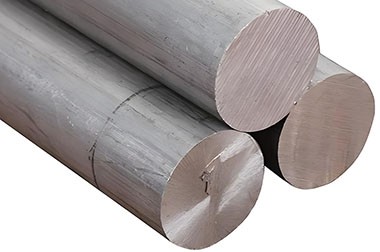1100 H14 H18 Aerospace Aluminum Bar
The 1100 aerospace aluminum rod is made from 1100 aluminum alloy, which consists primarily of aluminum elements with a purity of over 99%. It is a low-strength, highly ductile, and highly corrosion-resistant material. The 1100 aluminum alloy is mainly used in applications that require good formability, corrosion resistance, and weldability.
Since the 1100 aluminum alloy emphasizes durability and formability rather than strength, it is typically used in lightweight components that do not bear heavy loads in aerospace applications.

Characteristics of 1100 Aerospace Aluminum Bar
- 1. High corrosion resistance: 1100 aluminum has excellent corrosion resistance, making it particularly suitable for components exposed to chemical environments or humid air.
- 2. Good formability and machinability: 1100 aluminum has excellent ductility, allowing for various forming and bending processes, including cold and hot working.
- 3. High thermal and electrical conductivity: It has good thermal and electrical conductivity, which makes it commonly used in applications that require conductivity.
- 4. Low strength: Compared to other aluminum alloys (such as 2024, 7075, etc.), 1100 aluminum has lower strength, making it suitable mainly for low-load applications.
- 5. Good weldability: 1100 aluminum is easy to weld and handle after welding.
Specification of 1100 aluminum bar
| Alloy | 1100 |
| Temper | F, H14, H16, H18 |
| Out diameter | 3mm-200mm |
| Length | 3658mm, 6000mm |
| Standard | ASTM B211-12 EN 573-3:2013 AMS 4102 QQ-A-225/1 1100-TF Bar |
Chemical composition of 1100 aluminum alloy
| Element | Composition(%) |
| Si | 0.95 |
| Fe | |
| Cu | 0.05-0.20 |
| Mn | 0.05 |
| Mg | - |
| Zn | 0.05 |
| Al | Remainder |
Mechanical property of 1100 aluminum bar
| Temper | Yield strength MPa | Tensile strength MPa | Elongation | Hardness(HB) |
| F | 55 | 75 | 20 | 20 |
| O | 55 | 75 | 20 | 20 |
| H14 | 95 | 125 | 3 | 40 |
| H18 | 125 | 150 | 2 | 47 |
Applications of 1100 Aerospace Aluminum Bar
In the aerospace industry, 1100 aluminum rods are primarily used in applications that require special properties but do not have high strength demands, thanks to their excellent corrosion resistance, machinability, and thermal conductivity.
1. Aircraft Piping Systems and Ventilation Equipment
1100 aluminum rods are often used to manufacture piping systems within aircraft, such as those for air conditioning and heating systems. This is because 1100 aluminum has good corrosion resistance and formability, allowing it to be processed into complex pipe structures that can withstand the humidity and climate variations within an aircraft.
Air conditioning and ventilation ducts: The aircraft's Environmental Control System (ECS) requires a large number of ventilation devices and ducts, and 1100 aluminum rods are used to manufacture these components because they can resist moisture and accommodate complex duct layouts.
2. Lightweight Brackets and Connectors
Due to the good formability of 1100 aluminum and the low strength requirements for structural components, it is often used to manufacture lightweight brackets, connectors, and mounting supports for the aircraft's interior.
Electronic equipment brackets: 1100 aluminum rods can be processed into various shapes to secure electronic devices within the aircraft, such as navigational instruments, instrument panels, and lighting systems, providing stability while reducing overall weight.
3. Aircraft Radiators and Cooling Systems
The high thermal conductivity of 1100 aluminum makes it an important material for cooling systems in aircraft engines or electronic equipment radiators. Radiators require materials with good thermal conductivity that can withstand high temperatures and corrosive environments.
Heat exchangers: The engines, hydraulic systems, and electronic components of an aircraft require efficient radiators, and 1100 aluminum rods can be processed into heat sinks or heat exchangers for cooling these components.
4. Aircraft Food Service Equipment
Food storage and cooking equipment in aviation needs to use safe and corrosion-resistant materials. Due to its good performance in food safety, 1100 aluminum is often used to manufacture trays, cooking utensils, and storage containers on the aircraft.
Food equipment and storage containers: Most utensils and containers in the aircraft catering system are made of 1100 aluminum to ensure they are lightweight, corrosion-resistant, and easy to clean.
The application of 1100 aluminum rods in the aerospace field mainly focuses on components that do not require high strength, such as piping systems, lightweight brackets, radiators, catering equipment, signage, and decorative panels. Its high corrosion resistance, excellent formability, and thermal conductivity enable it to perform exceptionally well in these areas, especially in various lightweight and non-structural components within aircraft.
Machining Methods for 1100 Aerospace Aluminum Bar
1. Cold Working
Cold working refers to the processing of materials at room temperature or near room temperature. Common cold working methods for 1100 aerospace aluminum rods include:
Stretching
- Process: The aluminum rod is stretched through a mold to achieve the desired shape and size. During the stretching process, the material undergoes plastic deformation, commonly used to produce thin-walled tubes or other complex shapes.
- Advantages: This method can achieve higher strength and good surface quality, suitable for applications requiring precise dimensions.
Rolling
- Process: The aluminum rod is pressed to the desired thickness and width through one or more rollers. Rolling can be flat rolling or shape rolling.
- Advantages: This method allows for mass production, is highly efficient, and is suitable for producing thin sheets or strips.
Stamping
- Process: Using stamping dies to cut or form the aluminum rod, commonly used to manufacture complex-shaped parts.
- Advantages: Suitable for large-scale production, achieving high precision and consistency.
2. Hot Working
Hot working refers to the processing conducted above the recrystallization temperature of the material. Common hot working methods for 1100 aerospace aluminum rods include:
Hot Rolling
- Process: The aluminum rod is rolled through a mill at high temperatures to change its shape and size. Hot rolling is typically used to produce larger cross-sectional aluminum materials.
- Advantages: This method can significantly reduce the force required for processing and improve the material's plasticity, suitable for mass production and the processing of heavier materials.
Hot Extrusion
- Process: A heated aluminum rod is placed in an extruder and pressed through a mold to achieve the desired shape. Hot extrusion can produce complex cross-sections.
- Advantages: This method can create very complex and intricate shapes, suitable for producing various profiles and tubes.

